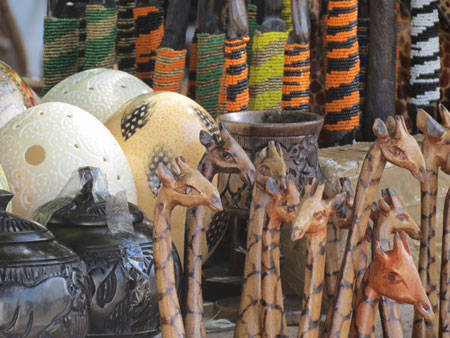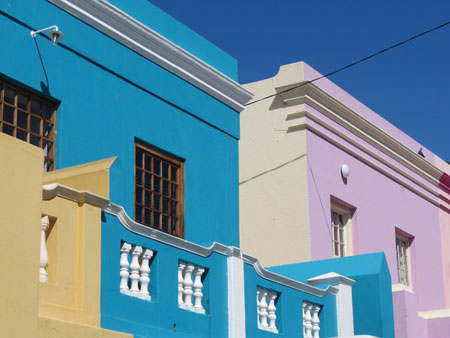Article content
8 October 2012 by Amy Sohanpaul
Cape Town is confusion. There's no pinning down the place. There are physical features of course that help to define it in the literal sense, none more omnipresent, more postcard representative than Table Mountain, the barrier between this city and the rest of the country, the barrier that holds in the weather so the winds swirl round and round the streets instead of sweeping off over the veldt.
It also stops the city from expanding as far as it could, but Cape Town's physical dimension is unrelated to how big it is in terms of experiences - the city is vast in its infinite variety.
There are five-star homes, prime properties behind high walls further barricaded with barbed wire, just across the road from a prison where inmates are squeezed in ten to a tiny cell. There are penguins on Boulders Beach, comically scuttling about the sand, and busy business people bustling about the streets almost as industriously.
There are pretty, traditional seaside villages like Fish Hoek where angling is all, there is the resolutely modern V&A Waterfront selling diamonds and doughnuts. There are sprawling townships and tall shiny towers, chaotic stalls of curios and chic boutiques with neat displays of designer threads, sophisticated bars constructing complicated cocktails and shebeens serving the local brew.
There are things I see that I don't believe I'm looking at. I wonder whether it's post-flight fatigue that's making me hallucinate, but since I've been thoroughly spoilt in Air France's finest cabin on the way here, it isn't. It was hardly the most exhausting flight, what with china and real cutlery and fine wine and multiple courses and room to stretch right out.
So I can't blame lack of sleep for the sight of an immaculately surfaced overpass curving confidently alongside us that abruptly stops mid-air, cables akimbo, and I wonder how people don't drive along it and fly their cars off. There must be a barrier somewhere.
The finished road we're on leads us to the luxury of the Taj hotel, situated right opposite ‘the people's Cathedral', as St George's is affectionately known, because of the part it played in the anti-apartheid movement, its doors open to all races, its pulpit the place from where Desmond Tutu gave many an inspiring sermon. From here, he and other religious leaders led the huge and hugely significant Cape Town Peace March on 13 September 1989, which played an important part in the eventual end of apartheid.
I make my way across the street as soon as I can after check-in at the Taj, first into the hushed cathedral, and then into the crypt downstairs, which is a mini-museum dedicated to the movement and the marches and also home to a café and jazz venue. Those contrasts again, but fittingly for a cathedral, solace upstairs and down.
The posters and memorabilia are vivid, gripping, but the stories I hear from a local resident over a drink here are more compelling still. She tells me about how much she adored her white father, how her coloured mother had to dress as a maid at home in case anyone should knock, how her sister, who looked white, could hold her father's hand on the street when they were out, how she never could because she was darker, how they had to go to different schools, how her sister left the country because she could never forget. She tells me that she herself has managed to put all this behind her.
In the bars of Long Street much later that night, it would appear that most people have. In this avenue that is charming by day, decadent by night, music powers out of pulsating bars packed with everyone from everywhere. There are wrought-iron balconies overlooking the street, and we escape to one for a place to hear ourselves talk and think, but even there, there's noisy banter from every corner of Africa and the world at the bar inside - refugees from Zimbabwe, moneyed tourists from America, and every variety of person in between.
It's a far cry from the utterly civilised cocktail hour we'd enjoyed at the Planet Bar at the Mount Nelson Hotel, an iconic waterhole at an iconic hotel, earlier in the evening. There the only noise was genteel gossip, ice clinking in long glasses and the bubbles fizzing in my Planet Passion - the cocktails were extraordinary creations.
This was a mix of Stolichnaya raspberry vodka, passion fruit, champagne and chambord. I thought of it the next day, while drinking fermented beer from a gourd in Langa Township. It went rather well with the boiled sheep's head we were offered, known locally as a ‘smiley' because of the rictus grin created as the head heats, the flesh pulling away from the teeth.
It may be demonic to look at, but it is delicious to eat, as were all the dishes we helped to prepare under the expert guidance of Lindy in the Eziko kitchen, set up to help disadvantaged youngsters learn skills that may lead to employment in one of Cape Town's many restaurants.
Of these, one of the finest is La Colombe, in the exclusive enclave of Constantia Uitsig. It sits in the middle of a vineyard, so it comes as no surprise that the wine list is the size of a bible. This befits the standard of the food, staggeringly good under the direction of chef Scot Kirton. My starter of poached oysters with a delicate velouté and caviar garnish was so good that I had it twice, the second time in place of pudding.
Perhaps that's one definition of Cape Town then. Boiled sheep's head for lunch, oysters and caviar for supper.








